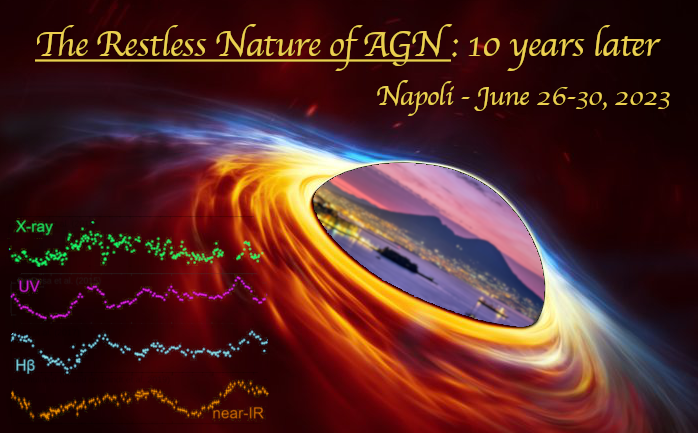Speaker
Description
Despite the increasing number of newly discovered changing look active galactic nuclei (AGN), larger samples of known objects and multi-epoch observations are needed to shed light on this debated physical mechanism. In this talk, I will report on the changing look AGN in the galaxy NGC4156, as serendipitously discovered thanks to data acquired in 2019 at the Telescopio Nazionale Galileo (TNG) during a student observing program. Unlike previous optical spectra showing no signatures of broad-line emission, our 2019 TNG data unexpectedly revealed the appearance of broad components in both Hα and Hβ profiles, along with a rising continuum, overall pointing to a transition from a type 2 towards a (nearly) type 1 AGN. The broad-line emission has been then confirmed by our 2022 TNG follow-up observations, whereas the rising continuum is no longer detected, which hints at a further evolution backwards to a (nearly) type 2. I will discuss possible mechanisms at the origin of the observed optical variability of NGC4156, and briefly compare it to what observed in its X-ray multi-epoch observations. Approved optical (Asiago telescope) and X-ray (Swift) monitoring programs will provide us further insights into the variability of this source, possibly constraining the typical timescales of these changing look events.

